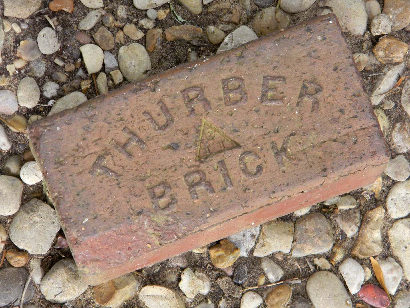|
|
In
1906 traffic on Austin’s
busy Congress Avenue amounted to a mix of horse-drawn wagons or buggies,
single riders on horseback, electric-powered street cars rolling along
iron tracks, the occasional horseless carriage and pedestrians who
had to keep a sharp eye if they didn’t want to get run over.
When it rained, the broad thoroughfare leading from the Colorado River
to the red granite capitol turned into one big mud puddle. When it
didn’t rain, all the traffic kicked up a lot of dust.
Finally, city fathers decided it was high time that the capital
of Texas have at least one paved street and hired a contractor
to lay bricks for Congress Avenue’s 1.2 mile extent. One of those
present at the ceremonial setting of the first brick was Adolph Wilke,
my great-grandfather. His nine-year-old son, my grandfather, later
recalled that his dad had taken the street car from their home near
30th and Guadalupe to downtown for the momentous event that signified
Austin’s transition from
hick town to city.
The bricks used to pave Congress came by train from Thurber,
then a bustling industrial city of 10,000 halfway between Fort
Worth and Abilene.
A company town if there ever was one, Thurber
had its beginning in 1888 when the Texas and Pacific Co. began mining
coal there. |
 |
A Thurber
Union-Made Brick.
TE Photo |
Company president
R.D. Hunter hired European immigrants to do the dirty work. A Scotsman
who lived up to that country’s reputation for, shall we say, careful
money management, Hunter famously declared: “I will run my business
or run it to Hell.”
In 1897, looking for a way to take advantage of leftover non-commercial
pea coal as well as the rich deposits of shale clay in the area, the
company diversified and began manufacturing brick in addition to mining.
Before long, the Thurber
brick plant was the largest and busiest west of the Mississippi. At
its height of operation, the plant produced 40 varieties, from common
brick (used in building construction) to numerous styles of the heavier
pavers. Eight hundred workers produced 80,000 bricks a day. |
The 1908 smokestack
in Thurber
TE Photo |
| Thurber-made
vitrified bricks spread all over Texas
and the Southwest. Streets in Amarillo,
Austin, Breckenridge,
Fort Worth, Galveston
and many more places were paved with them – in all, hundreds of miles
of roadway and even an experimental highway in the Belton-Temple
area consisting of two rows of bricks just wide enough for automobile
tires. Thurber bricks also covered parts of U.S. 80. Common brick
built many structures, including the Armor and Swift beef plants in
Fort Worth’s stockyard
district. |
|
|
The
Thurber Brick yards.
Old post card TE Archives |
|
The five-acre
brick plant was a half-mile southwest of the town’s business section.
The deposits of shale used to produce the bricks lay a mile north.
Once workers dug the shale, they loaded it into electric rail cars
that hauled it to the plant for grinding and mixture with water.
The wet clay was extruded into molds and then baked in one of 17
kilns. Though initially fired by the small-sized coal, the kilns
were later converted to burn natural gas.
If you had to pick between being a coal miner or “brick rustler,”
you would have wanted to be the latter. The miners descended 500
feet or so down a shaft early every morning, and except for a 30-mintute
lunch break, they spent most of their 12-hour shift lying on their
side in a coal vein never more than three feet high, wielding a
pick and breathing the black dust.
And while the miners tended to be lone wolves, the brick men worked
together. In today’s management speak they were “team players.”
Both classes of employees, however, tended to congregate at the
company-operated saloons in town, particularly The Snake. After
working half-day shifts in less than ideal conditions, consuming
ample quantities of cold beer made life seem a bit more worthwhile.
There’s a story about several Thurber
brick rustlers sitting in the saloon and listening to someone complain
that he had a whole field of ripe corn
he couldn’t get to because it literally crawled with rattlesnakes.
Two of the brick workers allowed as how they could get the job down.
After a handshake with the farmer, the two went to the company store
and bought enough stove pipe to cut two sets of homemade snake guards
for their legs. Then they proceeded to harvest the corn,
presumably while the rattlers got sore mouths striking at their
tin-clad legs.
The ample supply of cheap oil that Texas and Pacific officials had
played a role in discovering in 1917 around Ranger
ended up slowly killing Thurber.
Once the railroads
began converting to oil-burning locomotives, the demand for coal
atrophied. The brick business held firm a bit longer, but again,
petroleum-based asphalt paving proved cheaper and less labor intensive
than laying bricks.
The brick plant ceased operations in 1931. The company abandoned
the town,
salvaging what it could and dynamiting the rest. Today all that
remains is the tall brick smokestack and three buildings. (See Thurber)
© Mike Cox
"Texas Tales" May
20, 2010 column
|
|
|
